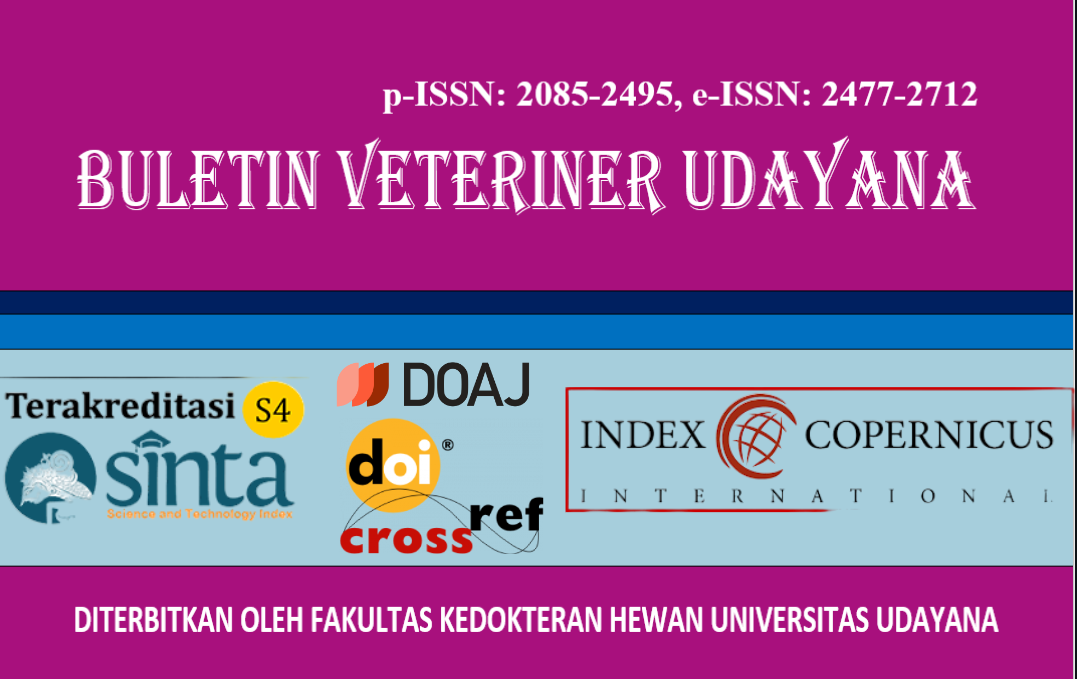EPIDEMIOLOGY AND HEMATOLOGICAL IMPACT OF TICK INFESTATION IN BALI CATTLE: A CROSS-SECTIONAL STUDY IN BONE REGENCY, INDONESIA
DOI:
https://doi.org/10.24843/bulvet.2025.v17.i05.p22Keywords:
Ticks, Infestation, Prevalence, Hematology, Bali CattleAbstract
A cross-sectional study was conducted to determine the prevalence, associated risk factors, and hematological impact of tick infestation on Bali cattle in Bone Regency, South Sulawesi, Indonesia. A total of 296 cattle from 10 districts were examined using purposive sampling. Data on risk factors (sex, age, management system, control methods) were collected via farmer questionnaires. Hematological profiles were assessed from infested animals. The overall prevalence of tick infestation was high at 60.13%, with significant variation between districts, ranging from 34.61% (Tanete Riattang Barat) to 89.66% (Palakka). Multivariate analysis identified sex, management system, and tick control practices as significant risk factors (p < 0.05) associated with infestation, whereas age was not a significant predictor. Despite the high infestation rate, all measured hematological parameters in infested cattle fell within normal physiological ranges. These findings highlight a high burden of tick infestation in the region and underscore the critical need for targeted control strategies focused on the identified risk factors to improve animal health and productivity.




